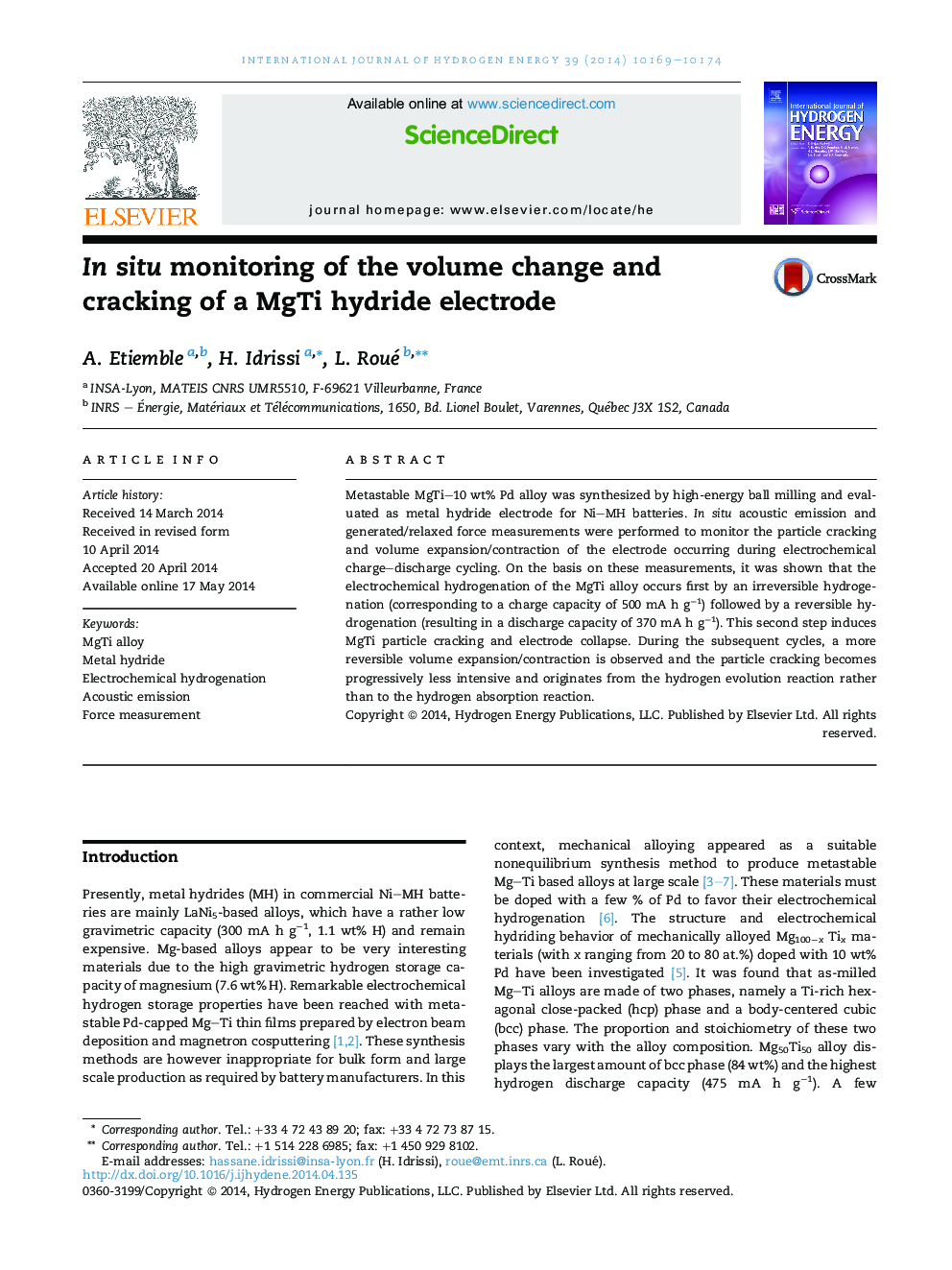| Article ID | Journal | Published Year | Pages | File Type |
|---|---|---|---|---|
| 1270369 | International Journal of Hydrogen Energy | 2014 | 6 Pages |
•Ball-milled MgTi alloy was studied as hydride electrode.•In situ acoustic emission and generated/relaxed force measurements were performed.•Particle cracking and volume variation of the electrode were monitored upon cycling.•The various phenomena occurring during the electrode activation were highlighted.
Metastable MgTi–10 wt% Pd alloy was synthesized by high-energy ball milling and evaluated as metal hydride electrode for Ni–MH batteries. In situ acoustic emission and generated/relaxed force measurements were performed to monitor the particle cracking and volume expansion/contraction of the electrode occurring during electrochemical charge–discharge cycling. On the basis on these measurements, it was shown that the electrochemical hydrogenation of the MgTi alloy occurs first by an irreversible hydrogenation (corresponding to a charge capacity of 500 mA h g−1) followed by a reversible hydrogenation (resulting in a discharge capacity of 370 mA h g−1). This second step induces MgTi particle cracking and electrode collapse. During the subsequent cycles, a more reversible volume expansion/contraction is observed and the particle cracking becomes progressively less intensive and originates from the hydrogen evolution reaction rather than to the hydrogen absorption reaction.
